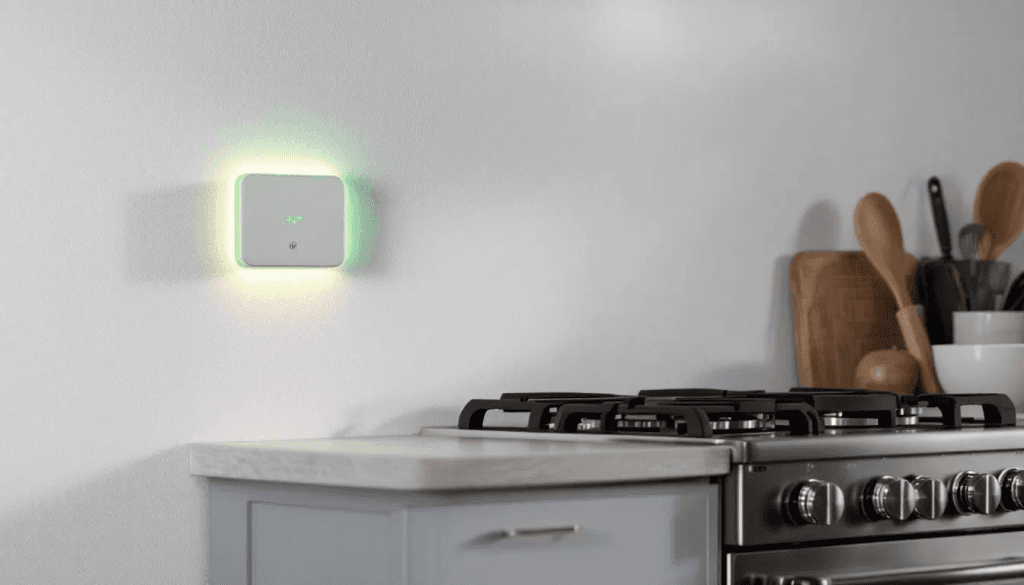Laboratory tests have revealed four distinct types of mold in University of Oklahoma (OU) dormitories, raising serious concerns about student health and safety in campus housing facilities. The discovery highlights the ongoing challenges educational institutions face in maintaining healthy indoor environments.
Mold Discovery in OU Dormitories

University campus building highlighting student housing concerns
Professional laboratory analysis identified four specific mold types present in OU dormitory facilities:
Identified Mold Species
- Aspergillus - A common indoor mold that can cause respiratory problems
- Penicillium - Often found in water-damaged buildings and can trigger allergies
- Rhizomucor - A fast-growing mold that thrives in humid conditions
- Exserohilum - A mold species that can cause serious health issues in sensitive individuals
Affected Buildings
The contamination was found in multiple dormitory buildings:
- Walker Center
- Couch Center
- Adams Tower
Student Health Impacts
The presence of mold in dormitory facilities has directly affected student health and academic performance.
Case Study: Elizabeth Cormack
Elizabeth Cormack, a student living in Walker Center, allowed professional testing in her dormitory room. Her cooperation helped document the extent of contamination in student living spaces.
Case Study: Jane Smith
Jane Smith experienced severe health symptoms that appeared to be linked to mold exposure in her dormitory:
"She was fine when she was at home with us. She didn't have any symptoms"
This pattern of symptoms appearing only while on campus and disappearing during time away strongly suggests environmental factors in the dormitory are affecting student health.
Health Symptoms Associated with Dormitory Mold
Students exposed to mold in dormitory settings may experience:
Immediate Symptoms
- Coughing and throat irritation
- Sneezing and runny nose
- Eye irritation and watering
- Skin rashes or irritation
Serious Health Effects
Mold exposure can cause more severe reactions:
- Allergic reactions ranging from mild to severe
- Sinus infections that can become chronic
- Respiratory complications particularly in asthmatic students
- Persistent fatigue affecting academic performance
Inadequate Response Measures
The institutional response to mold problems has been concerning:
Ineffective Cleaning Methods
- Spraying bleach - This approach only addresses surface mold and doesn't solve underlying moisture problems
- Minimal cleaning efforts - Superficial cleaning doesn't address contamination in building materials
- Lack of professional remediation - Proper mold remediation requires specialized techniques and equipment
Systemic Issues
The response highlights broader problems in campus facility management:
- Inadequate understanding of mold remediation requirements
- Insufficient resources allocated to indoor air quality
- Lack of professional assessment protocols
- Limited communication with affected students
Why Dormitories Are Vulnerable
University dormitories face unique challenges that make them susceptible to mold growth:
High Occupancy Density
- Multiple students per room increase humidity from breathing and activities
- Shared bathroom facilities create high-moisture environments
- Cooking and food storage generate additional moisture
Building Age and Maintenance
- Older buildings may have compromised building envelopes
- Deferred maintenance can lead to water intrusion
- HVAC systems may be inadequate for current usage
Student Lifestyle Factors
- Students may not report maintenance issues promptly
- Lack of experience with proper ventilation practices
- Limited ability to control environmental conditions
Proper Mold Remediation for Educational Facilities
Effective mold remediation in dormitories requires:
Professional Assessment
- Comprehensive inspection of all affected areas
- Air quality testing to determine contamination levels
- Moisture source identification to prevent recurrence
- Health risk evaluation for ongoing occupancy
Professional Remediation
- Containment protocols to prevent spread during cleanup
- Proper removal of contaminated materials
- HEPA filtration during remediation work
- Antimicrobial treatment of affected surfaces
Verification Testing
- Post-remediation testing to confirm successful cleanup
- Air quality verification before reoccupancy
- Ongoing monitoring to detect future problems
- Documentation of all remediation activities
Student Rights and Safety
Students living in campus housing have legitimate expectations regarding their living environment:
Health and Safety Rights
- Access to healthy indoor air quality
- Prompt response to environmental health concerns
- Professional assessment when health problems occur
- Temporary relocation during remediation when necessary
Advocacy and Resources
Students facing mold-related health issues should:
- Document symptoms and their relationship to campus residence
- Report issues formally through appropriate campus channels
- Seek medical attention for health symptoms
- Consider independent testing when institutional response is inadequate
Prevention Strategies for Educational Institutions
Universities can prevent mold problems through:
Proactive Maintenance
- Regular building inspections for moisture intrusion
- Prompt repair of leaks and water damage
- HVAC maintenance to ensure proper ventilation
- Humidity monitoring in dormitory facilities
Student Education
- Orientation programs on proper dormitory living practices
- Information campaigns about reporting maintenance issues
- Guidance on personal practices that affect indoor air quality
- Health awareness about mold-related symptoms
Emergency Response Protocols
- Rapid response teams for water damage events
- Professional assessment protocols for suspected mold issues
- Student relocation procedures during remediation
- Communication plans to keep students informed
Conclusion
The discovery of four types of mold in OU dormitories and the resulting student health issues highlight critical gaps in campus housing safety protocols. Students like Jane Smith, who experienced symptoms only while living on campus, demonstrate the direct connection between dormitory environmental conditions and student health.
Effective response to mold problems in educational facilities requires professional assessment, proper remediation techniques, and ongoing prevention programs. Simply spraying bleach or conducting minimal cleaning is inadequate and potentially dangerous for student health.
Universities have a responsibility to provide safe, healthy living environments for their students. When mold problems occur, prompt professional remediation and transparent communication with affected students are essential.
Students experiencing health symptoms that may be related to their dormitory environment should seek medical attention, document their symptoms, and advocate for proper professional assessment and remediation of their living spaces.
The health and academic success of students depend on maintaining safe, healthy campus housing facilities. Mold contamination is a serious issue that requires professional expertise and institutional commitment to student safety.
